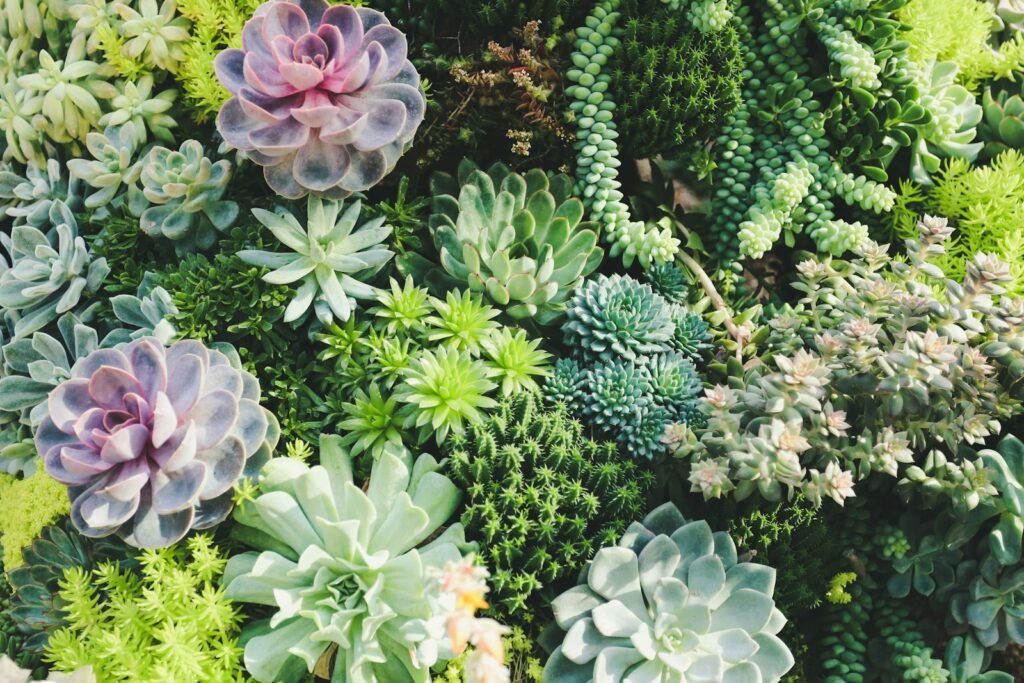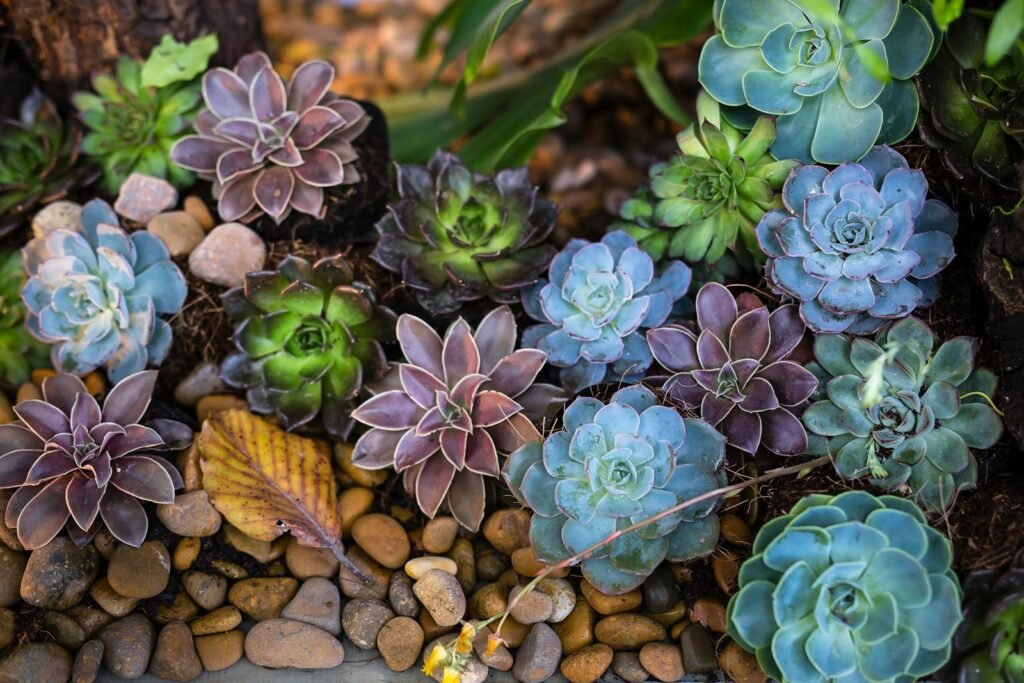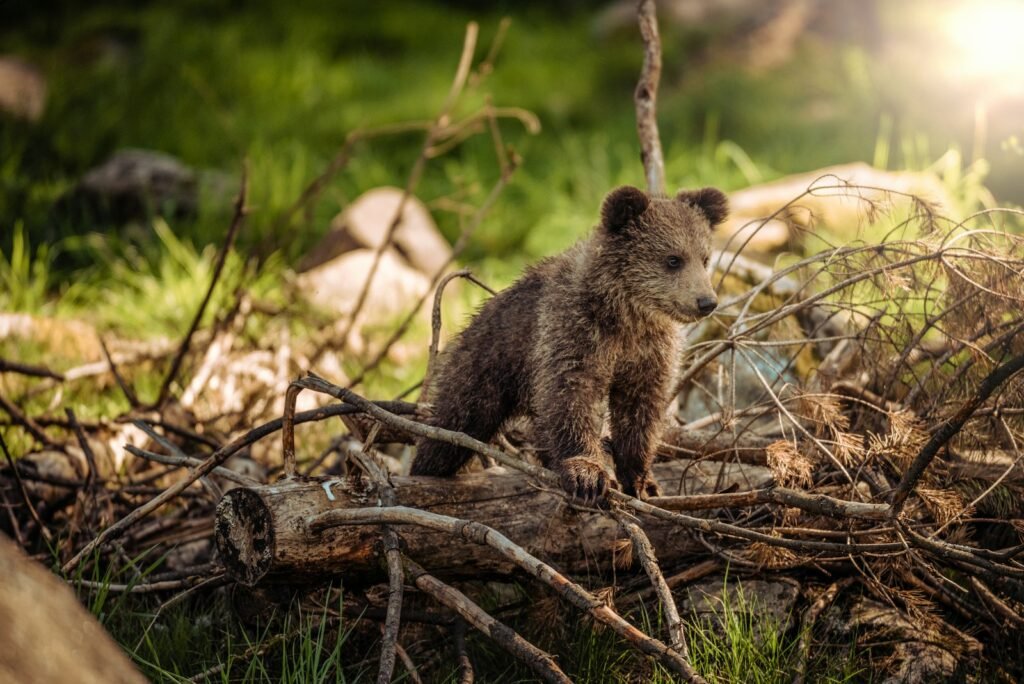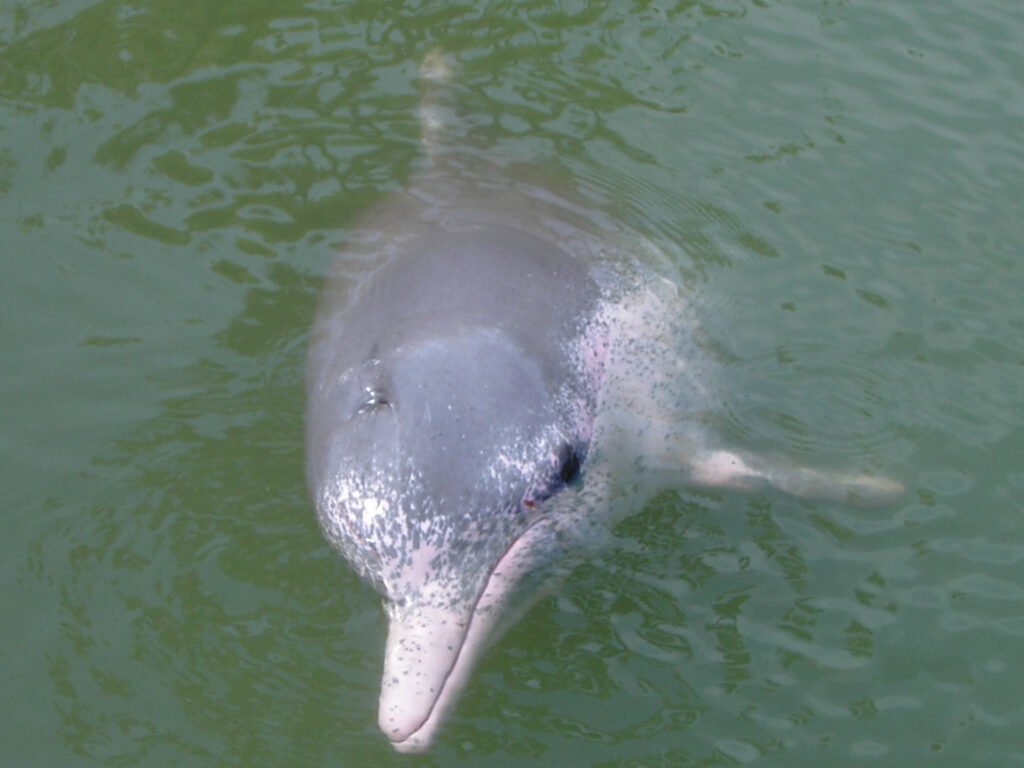Most people flee when volcanoes erupt, but some remarkable plants actually celebrate these fiery events. While we see destruction and devastation, these botanical survivors see opportunity knocking at their door. Imagine being so tough that you can literally grow from ashes, feed on volcanic minerals, and call the most hostile places on Earth your home. These aren’t just plants – they’re nature’s ultimate survivors, equipped with superpowers that would make any superhero jealous.
The Volcanic Playground Where Death Meets Life

Volcanic environments create some of the most extreme conditions on our planet, yet they’re surprisingly full of life. The scorching heat, toxic gases, and ash-covered landscapes might look like scenes from an apocalypse movie, but they’re actually botanical gold mines. These harsh conditions act like a natural selection boot camp, where only the toughest plants graduate. The volcanic ash that seems so destructive is actually packed with essential minerals like potassium, phosphorus, and trace elements that plants desperately need. It’s like nature’s own super-fertilizer, just delivered in the most dramatic way possible.
Pioneer Species Leading the Green Revolution

Pioneer species are the brave first responders of the plant world, rushing into volcanic disaster zones while everyone else runs away. These plants have evolved special abilities to colonize fresh volcanic surfaces where nothing else can survive. They’re like botanical entrepreneurs, seeing opportunity where others see only destruction. Some of these pioneers can actually sprout from seeds that have been lying dormant for decades, waiting for the perfect volcanic moment to wake up. Their success paves the way for other plants to follow, creating entire ecosystems from what was once barren rock and ash.
The Sulfur-Loving Mosses That Paint Volcanoes Green

Mosses are often the very first plants to appear on cooling volcanic surfaces, creating green carpets where nothing grew before. These tiny plants can tolerate incredibly high levels of sulfur that would kill most other vegetation instantly. They absorb moisture directly from the air, which means they don’t need soil to get started – just a rocky surface will do. Some volcanic mosses can even survive temperatures that would cook most plants, making them nature’s ultimate heat-resistant survivors. Watching these mosses spread across black volcanic rock is like witnessing the Earth’s own healing process in fast-forward.
Ferns That Rise from Volcanic Ashes

Ferns have a special relationship with volcanic environments that goes back millions of years. Their spores can travel incredible distances on volcanic winds, landing on fresh lava flows and immediately beginning the colonization process. These ancient plants are masters of rapid reproduction, sending out thousands of spores that can survive the harsh conditions. Some volcanic ferns can grow so quickly that they can cover entire hillsides within just a few growing seasons. It’s like watching nature’s own time-lapse photography, as green life slowly but surely reclaims the volcanic landscape.
Grasses That Grow in Nature’s Furnace

Certain grass species have evolved to thrive in the mineral-rich volcanic soils that would overwhelm most plants. These grasses can handle the extreme pH levels and high mineral content that comes with volcanic ash. They form dense mats that help stabilize the loose volcanic soil and prevent erosion. Their extensive root systems can penetrate deep into volcanic deposits, accessing water and nutrients that other plants can’t reach. These grasses are like nature’s own soil engineers, building the foundation for future plant communities.
Trees That Embrace the Fire

Some tree species have developed incredible adaptations to survive and even benefit from volcanic activity. Fire-resistant bark, deep root systems, and the ability to resprout from burned stumps are just a few of their survival tricks. These trees often grow faster in volcanic soils because of the abundant minerals available to them. They can create their own microclimates, providing shade and protection for smaller plants trying to establish themselves. Watching a tree thrive in a recently volcanic area is like seeing nature’s own phoenix rising from the ashes.
The Nitrogen-Fixing Champions of Volcanic Soils

Nitrogen-fixing plants are the ultimate team players in volcanic environments, taking nitrogen from the air and converting it into forms that other plants can use. These plants have special relationships with bacteria that live in their root systems, creating their own fertilizer factories. They’re essential for building up the nutrient content of volcanic soils, which are often rich in minerals but poor in organic matter. Without these nitrogen-fixing pioneers, volcanic landscapes would remain barren for much longer. They’re like nature’s own agricultural specialists, preparing the soil for future plant generations.
Lichens: The Artistic Pioneers of Volcanic Rock

Lichens are fascinating partnerships between fungi and algae that can colonize bare volcanic rock like living graffiti. These organisms can survive in conditions that would kill both fungi and algae separately, proving that teamwork really does make the dream work. They slowly break down volcanic rock through chemical processes, creating the first bits of soil for other plants to use. Some lichens can live for hundreds of years, slowly but steadily transforming rocky volcanic surfaces into habitable environments. They’re like nature’s own sculptors, gradually carving out niches for life in the most unlikely places.
Succulents That Store Volcanic Treasures

Succulent plants have found ways to thrive in volcanic environments by storing water and nutrients in their thick, fleshy tissues. These plants can handle the extreme temperature swings that come with volcanic terrains, from scorching days to surprisingly cold nights. They’re masters of water conservation, which is crucial in volcanic areas where water can be scarce or contaminated. Some succulents can even store and concentrate volcanic minerals in their tissues, creating their own internal treasure vaults. Their ability to grow slowly and steadily makes them perfect for the unpredictable conditions of volcanic landscapes.
The Surprising Wildflowers of Volcanic Fields

Wildflowers might seem too delicate for volcanic environments, but some species have evolved to paint these harsh landscapes with brilliant colors. These flowers often have short growing seasons, racing to bloom and set seed before conditions become too harsh. They’ve developed strategies like producing seeds that can survive buried in volcanic ash for years, waiting for the right moment to germinate. Some volcanic wildflowers have evolved unique colors and patterns that help them attract pollinators in these unusual environments. It’s amazing how beauty can emerge from such destructive forces, proving that life always finds a way to add color to even the bleakest situations.
Bamboo: The Flexible Survivor of Volcanic Slopes

Bamboo species have developed remarkable strategies for surviving on volcanic slopes, using their flexibility to bend with volcanic winds and their rapid growth to outpace ash accumulation. These plants can grow several feet in a single day, quickly establishing themselves before slower-growing competitors can catch up. Their hollow stems and flexible structure allow them to survive the physical stresses of volcanic environments. Some bamboo species can even survive being partially buried in ash, sending up new shoots from underground root systems. They’re like nature’s own skyscrapers, reaching for the sun while staying firmly rooted in volcanic soil.
Shrubs That Build Volcanic Communities

Shrubs play a crucial role in volcanic plant communities, serving as nurse plants that provide shelter and protection for smaller species. These woody plants can survive the intense solar radiation and temperature extremes common in volcanic areas. They often have deep root systems that can access water sources far below the surface, sharing resources with other plants through underground networks. Some shrubs can even survive direct contact with volcanic ash and debris, simply growing around obstacles rather than being defeated by them. They’re like nature’s own community organizers, bringing together diverse plant species in the most challenging environments.
Vines That Climb Volcanic Cliffs

Climbing vines have found creative ways to thrive on volcanic cliffs and slopes, using their flexibility and climbing ability to reach sunlight and escape ground-level hazards. These plants can quickly cover large areas of volcanic rock, creating living curtains that protect the rock face from erosion. They’re masters of efficient resource use, often having small leaves and extensive root systems that can extract nutrients from tiny cracks in volcanic rock. Some vines can even survive having their above-ground parts destroyed by volcanic activity, regrowing from root systems that remain safely underground. They’re like nature’s own rock climbers, finding handholds and footholds where others see only impossible terrain.
Epiphytes: The Air Plants of Volcanic Forests

Epiphytic plants have developed incredible strategies for living on volcanic trees and rocks without soil, getting everything they need from air and rain. These plants can filter nutrients and moisture directly from volcanic mists and fog, turning atmospheric conditions into their own personal food delivery service. They don’t compete with ground plants for resources, instead creating their own aerial gardens high above the volcanic forest floor. Some epiphytes can even absorb and concentrate volcanic minerals from the air, creating their own nutrient storage systems. They’re like nature’s own aerial acrobats, performing impossible feats of survival while suspended in mid-air.
Carnivorous Plants in Volcanic Wetlands

Some volcanic areas create unique wetland conditions where carnivorous plants can thrive, supplementing their diet by catching insects in nutrient-poor volcanic soils. These plants have evolved incredible trapping mechanisms that allow them to get nitrogen and other nutrients from prey rather than relying solely on soil. They’re perfectly adapted to the acidic conditions often found in volcanic wetlands, where most other plants would struggle to survive. Some carnivorous plants can even survive being temporarily buried in volcanic ash, emerging to continue their hunting activities once conditions improve. They’re like nature’s own predators, turning harsh volcanic environments into productive hunting grounds.
The Medicinal Plants of Volcanic Regions

Many plants that grow in volcanic soils have developed unique chemical compounds that make them valuable for medicinal purposes. The extreme growing conditions and mineral-rich soils can cause plants to produce higher concentrations of beneficial compounds than their counterparts in normal soils. Some of these plants have been used by indigenous peoples for thousands of years to treat various ailments. The stress of growing in volcanic environments can actually make plants stronger and more potent, like a natural pharmacy that’s powered by volcanic forces. It’s fascinating how plants that survive in such harsh conditions can provide healing and wellness to humans.
Adaptations That Defy Belief

The adaptations that allow plants to survive in volcanic environments are so incredible they seem almost supernatural. Some plants have developed heat-resistant proteins that prevent their cells from cooking in high temperatures. Others have evolved specialized root systems that can penetrate solid volcanic rock, seeking out tiny cracks and crevices where water and nutrients might be hiding. Some plants can even change their metabolism to handle the toxic gases that are common around volcanic areas. These adaptations represent millions of years of evolution, with each generation becoming better suited to life in one of Earth’s most challenging environments.
The Future of Volcanic Plant Research

Scientists are discovering new volcanic plant species and adaptations all the time, revealing just how creative life can be in extreme environments. These discoveries are helping us understand how plants might adapt to climate change and other environmental challenges. Some researchers are even studying volcanic plants to develop new crops that could grow in harsh conditions or contaminated soils. The genetic secrets of these plants could hold keys to solving food security issues in a changing world. It’s amazing to think that these survivors of volcanic fury might help us create a more sustainable future for agriculture and environmental restoration.
Conservation Challenges in Volcanic Habitats

Volcanic plant communities face unique conservation challenges because their habitats are constantly changing due to ongoing volcanic activity. Some rare species exist only on specific volcanic sites, making them incredibly vulnerable to extinction. Human activities like mining and development can destroy these specialized habitats before we even fully understand what lives there. Climate change is also affecting volcanic environments, potentially disrupting the delicate balance that allows these specialized plant communities to thrive. Protecting these unique ecosystems requires a different approach than traditional conservation methods, one that accounts for the dynamic nature of volcanic landscapes.
Lessons from Nature’s Ultimate Survivors

These volcanic plants teach us incredible lessons about resilience, adaptation, and the power of life to overcome seemingly impossible obstacles. They show us that destruction and creation are often two sides of the same coin, with today’s disaster becoming tomorrow’s opportunity. Their survival strategies could inspire new approaches to environmental restoration and sustainable agriculture. These plants prove that with the right adaptations and enough determination, life can flourish anywhere on Earth. What other impossible places might be hiding thriving communities of life, just waiting for us to discover them?




